Technology

10 min

Design patterns are tried-and-true solutions to common software design problems. They improve code quality, maintainability, and versatility, and are applicable in various software domains, including web and mobile apps, enterprise systems, and embedded software.

By Vinamra Singh
31 Oct, 2023
In the world of software development, design patterns play a crucial role in creating scalable, maintainable, and efficient code. The design patterns are reusable solutions to developers' common problems during software development. They provide a structured approach to solving design problems and promote code reusability, modularity, and flexibility.
This blog will explore various design patterns, including Singleton, Observer, Factory, and more, explaining their purpose, implementation, and benefits in software development.
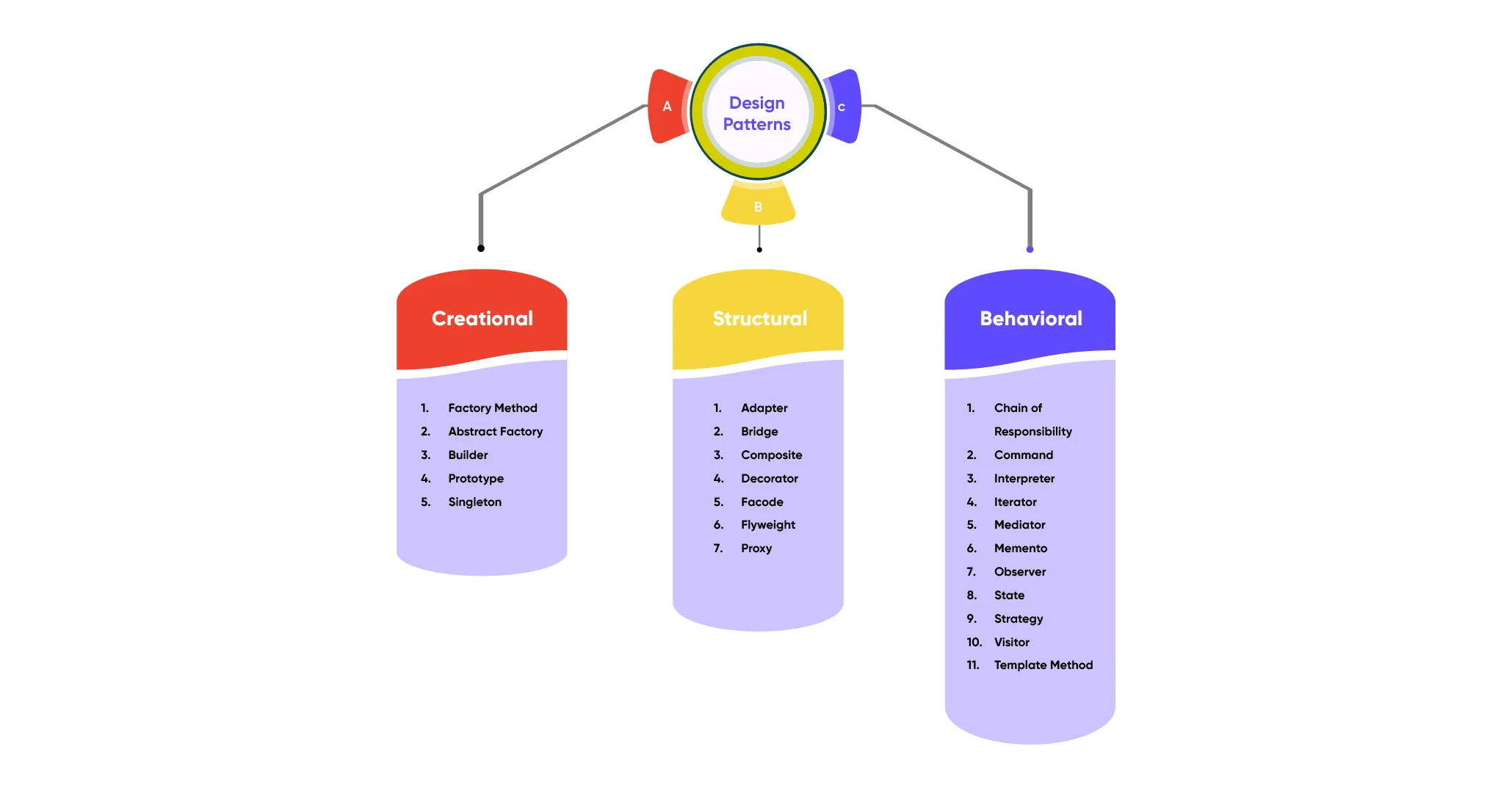 There are 23 design patterns discovered to date. It can be categorized based on purpose-creational, structural, and behavioral design patterns. These classifications effectively organize the design patterns and ensure the authenticity of development.
There are 23 design patterns discovered to date. It can be categorized based on purpose-creational, structural, and behavioral design patterns. These classifications effectively organize the design patterns and ensure the authenticity of development.
Some popular design patterns in software development are as follows:
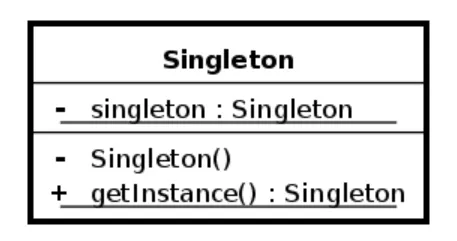
Purpose: The Singleton pattern ensures that only one class instance is created throughout the application's lifetime. It is commonly used when there is a need for a single point of access to a resource or when maintaining a global state. The Singleton pattern guarantees that the same instance is used across the entire application, avoiding unnecessary multiple instantiations.
Implementation: To implement the Singleton pattern, we create a class with a private constructor to prevent direct instantiation. The class provides a static method that allows clients to access a single instance. The instance is created upon the first call to the static method, and subsequent calls return the same instance.
Benefits: The Singleton pattern provides centralized control over the instance, ensuring that the access to the resource is well-managed and coordinated. Memory consumption is optimized as only one class instance exists, especially in resource-intensive scenarios. It supports lazy initialization, meaning the instance is created when first required, improving performance and resource utilization.
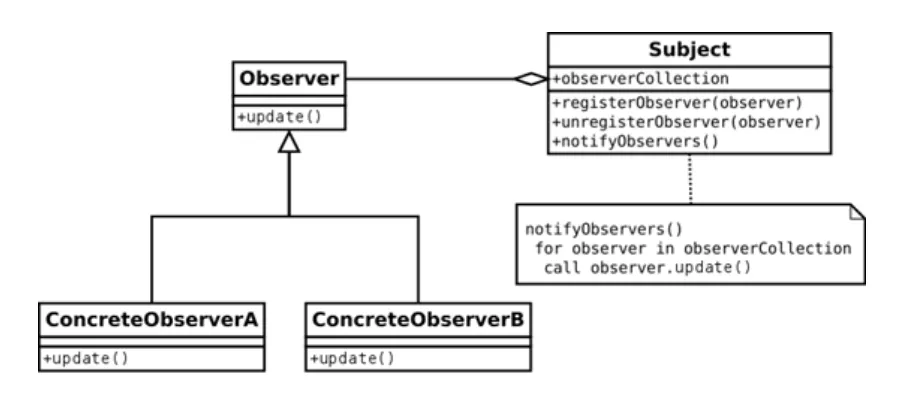
Purpose: The Observer pattern is used when there is a one-to-many relationship between objects, where the state change of one object needs to be propagated to multiple dependent objects. It promotes loose coupling between objects, allowing them to interact without being tightly coupled. The Observer pattern enables objects to observe and respond to changes in another object's state.
Implementation: The implementation involves defining two entities: the subject (or observable) and the observers. The subject first maintains a list of observers and later notifies them when its state changes. Observers register with the subject and are updated automatically when the subject's state changes.
Benefits: The Observer pattern promotes a loosely coupled architecture, making maintaining and extending the system easier. Changes in one object do not require modifications to all dependent objects. New observers can be added without modifying existing code, allowing for easy scalability and adaptability to changing requirements.
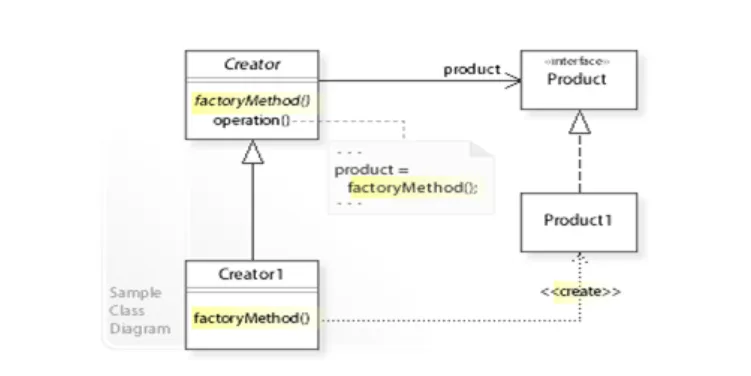
Purpose: The Factory pattern provides an interface for creating objects but delegates the responsibility of instantiating concrete objects to subclasses. It decouples the client code from the specific classes it needs to instantiate, allowing flexibility in object creation.
Implementation: The Factory pattern involves creating an abstract class or interface that defines the standard interface for the products. Concrete classes implement the interface and provide the actual implementation details. A factory class creates instances of these substantial classes based on certain conditions or parameters.
Benefits: The Factory pattern encapsulates the object creation logic, making it easier to create objects without exposing the complex instantiation process to the client code. This pattern facilitates code maintainability by centralizing object creation logic, allowing for easier modifications and updates. It also enables the system to scale by introducing new product classes without impacting existing code.
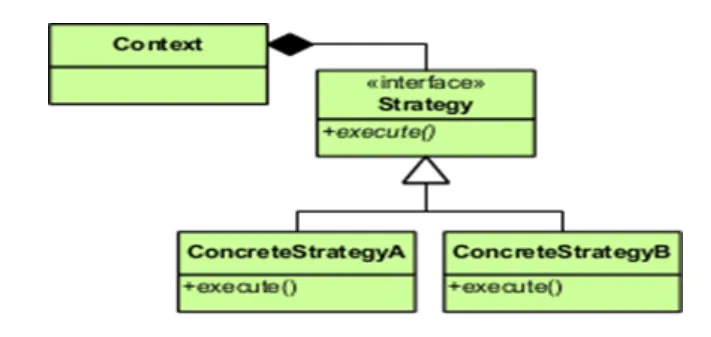
Purpose: The Strategy pattern defines a family of interchangeable algorithms or behaviors and encapsulates each. It mainly allows the algorithm to vary independently from its clients. The Strategy pattern enables the dynamic selection of algorithms at runtime.
Implementation: The Strategy pattern involves creating a standard interface for the algorithms and providing multiple concrete implementations. The client code holds a reference to the interface and can switch between different strategies dynamically.
Benefits: The Strategy pattern allows for runtime algorithm selection, enabling the system to adapt and change behavior dynamically. It facilitates easier maintenance and extension by encapsulating each algorithm separately. Adding new strategies does not require modifying existing code.
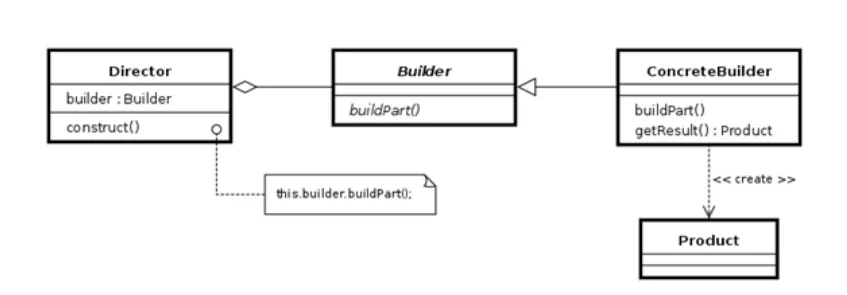
Purpose: The Builder pattern is used to build complex objects stepwise. It mainly separates the construction of an object from its representation, allowing the same construction to create various representations. It is useful when object creation involves multiple steps or parameters.
Implementation: The Builder pattern involves creating a Builder class that provides methods for setting different attributes or parameters of the constructed object. The client code uses the builder to set the desired values and then calls a build method to obtain the final created object.
Benefits: The Builder pattern encapsulates the object construction process, clearly separating concerns between construction and representation. It provides flexibility in constructing objects with different configurations or variations without needing multiple constructors or complex parameter lists.
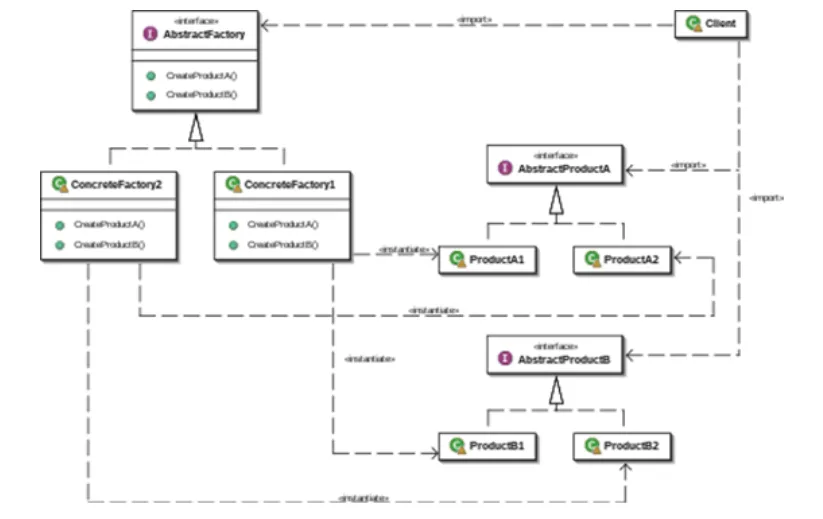
Purpose: The Abstract Factory pattern provides an interface for creating various families of dependent objects without specifying their concrete classes. It allows the client code to create objects without knowing the specific class implementations.
Implementation: The pattern involves creating abstract classes for the factories and product families and concrete implementations for each specific factory and product.
Benefits: It promotes loose coupling between the client code and the concrete classes, making it easier to switch between different implementations. It also encapsulates the object creation logic, enhancing code maintainability and extensibility.
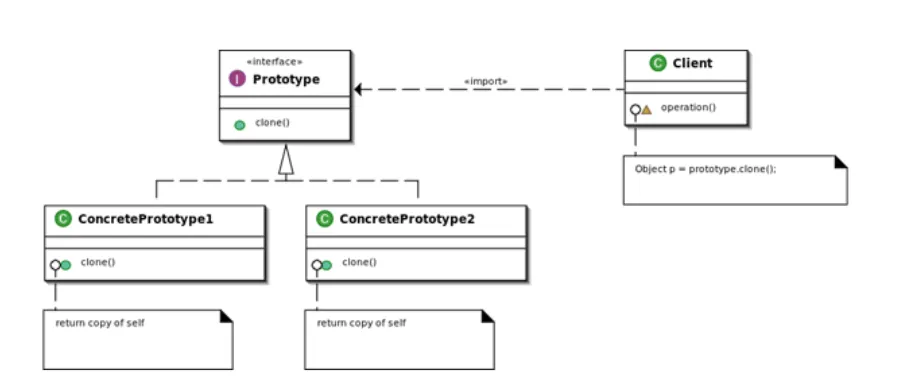
Purpose: The Prototype pattern is used to create new objects by cloning existing objects. It allows the creation of new instances without explicitly specifying their concrete classes and avoids the need for sub-classing.
Implementation: The pattern involves creating a prototype interface or abstract class and concrete classes that implement the prototype. The cloning is typically done through a clone() method.
Benefits: It enables the creation of objects dynamically at runtime, reducing the need for complex object initialization. It allows adding and removing objects at runtime, improving flexibility and performance.
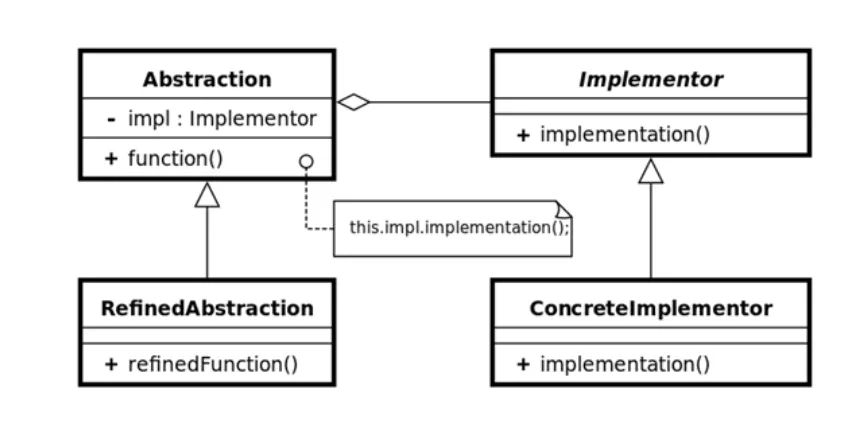
Purpose: The Bridge pattern decouples an abstraction from its implementation, allowing them to vary independently. It is used when multiple dimensions of variation exist in a system, and you want to avoid a combinatorial explosion of classes.
Implementation: The pattern involves creating two separate class hierarchies for abstraction and implementation. The abstraction references the implementation, which can be swapped at runtime.
Benefits: It promotes loose coupling between the abstraction and its implementation, making modifying and extending both independently easier. It also improves code maintainability and reusability by avoiding the need for multiple subclasses.
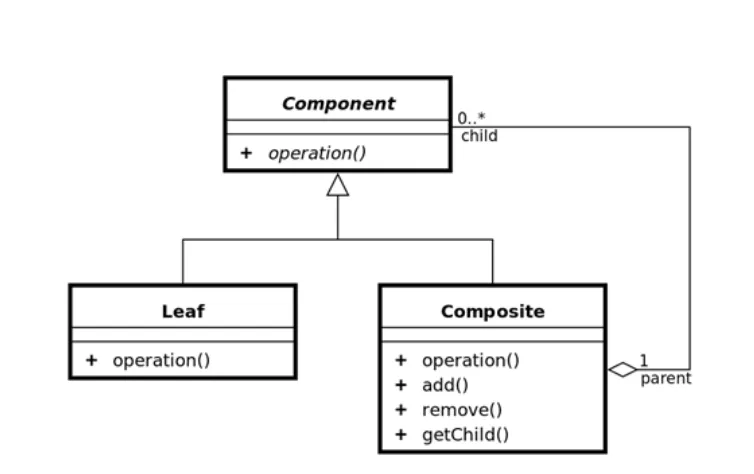
Purpose: The Composite pattern allows you to treat individual and group objects uniformly, creating a tree-like structure. It represents part-whole hierarchies, where clients can interact with particular objects or composite structures.
Implementation: The pattern involves creating an abstract class or interface for the leaf and composite nodes. The hybrid node contains a collection of child nodes and implements the same interface as the leaf nodes.
Benefits: It simplifies the client code by uniformly treating individual and composite objects. It provides a flexible and recursive structure that allows easy traversal and manipulation of complex object hierarchies.
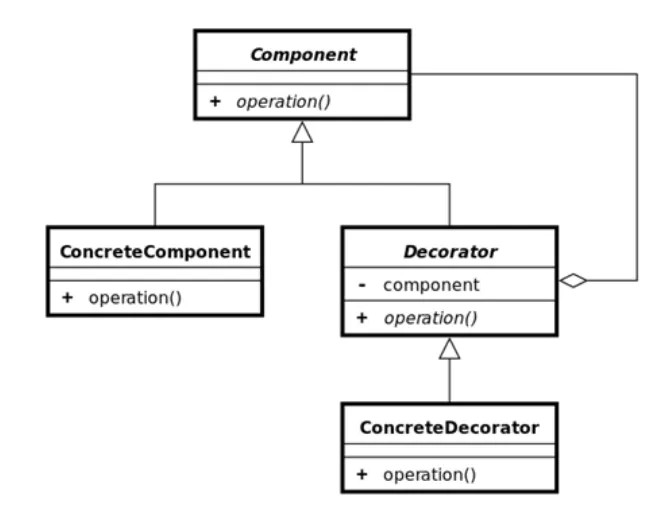
Purpose: The Decorator pattern allows you to dynamically add new behaviors to objects by wrapping them with decorator objects. It provides an alternative to subclassing for extending functionality.
Implementation: The pattern involves creating a base component interface or abstract and concrete component classes. Decorator classes implement the same interface and contain a reference to the component they decorate.
Benefits: It enables the addition of new functionalities to objects at runtime without affecting the existing code. It promotes the open-closed principle by allowing the expansion of new decorators without modifying the current code.
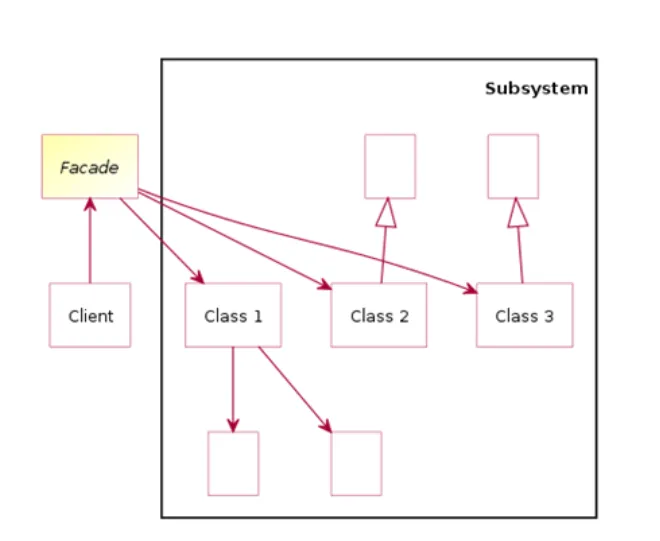
Purpose: The Facade pattern provides a unified interface. It is a set of interfaces in a subsystem. It simplifies the usage of complex systems by providing a higher-level interface that hides the complexities of the underlying subsystem.
Implementation: The pattern involves creating a facade class that encapsulates the interactions with the subsystem. The facade class delegates the client's requests to the appropriate subsystem classes.
Benefits: It simplifies the client code by providing a simplified interface to a complex subsystem. It decouples the client code from the subsystem, making it easier to modify or replace the subsystem without affecting the clients.
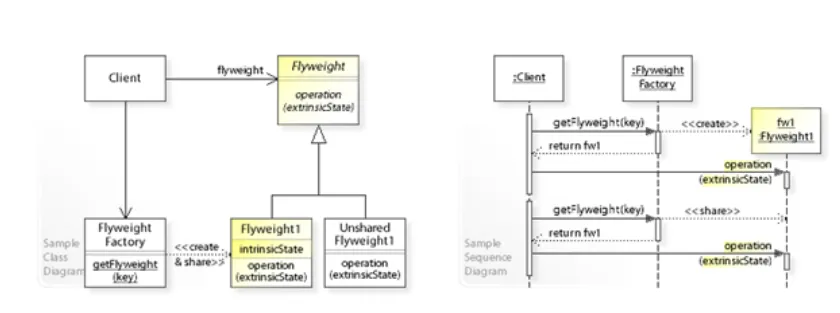
Purpose: The Flyweight pattern minimizes memory usage by sharing data between similar objects. It is suitable when many similar objects share a common state.
Implementation: The pattern involves creating a flyweight factory that manages and shares the flyweight objects. The flyweight objects contain intrinsic state (shared data) and extrinsic state or context-specific data.
Benefits: It reduces memory usage by sharing a common state among multiple objects. It improves performance by avoiding the creation of redundant objects. It also facilitates the handling of large numbers of objects efficiently.
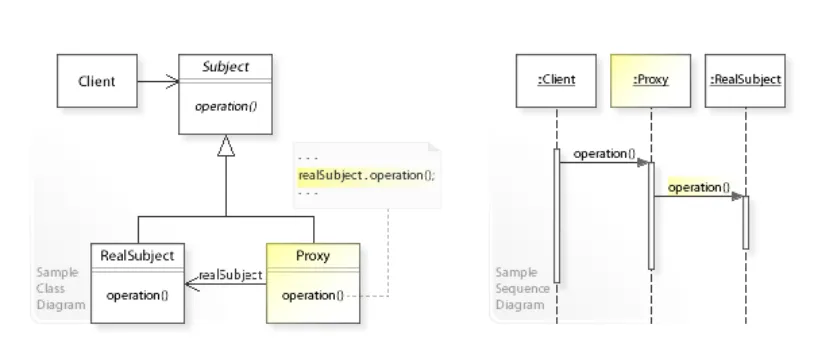
Purpose: The Proxy pattern provides a surrogate or placeholder object that controls access to another object. It allows adding an extra layer of indirection to support additional functionalities or control access to the underlying object.
Implementation: The pattern involves creating a proxy class that implements the same interface as the underlying object. The proxy class controls access to the object, performing additional operations as needed.
Benefits: It provides a level of indirection, allowing for additional functionalities like lazy initialization, access control, and logging. It enhances the security and performance of the system by controlling the object's access.
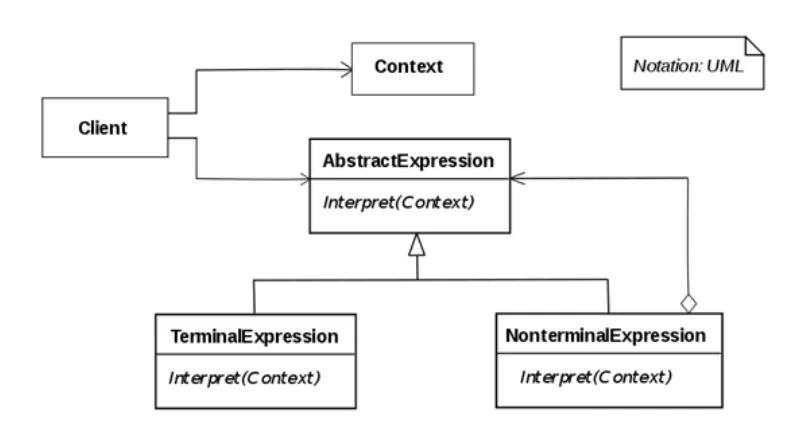
Purpose: The Interpreter pattern defines a language and represents sentences in that language. It suits scenarios where you must interpret or evaluate grammatical expressions or rules.
Implementation: The pattern involves creating an abstract syntax tree (AST) representing the grammar rules. Each node in the AST represents a language element, and an interpreter interprets the meaning of each node.
Benefits: It provides a flexible way to define grammatical rules and interpret sentences. It allows adding new expressions or regulations without modifying the existing code. It helps implement domain-specific languages.
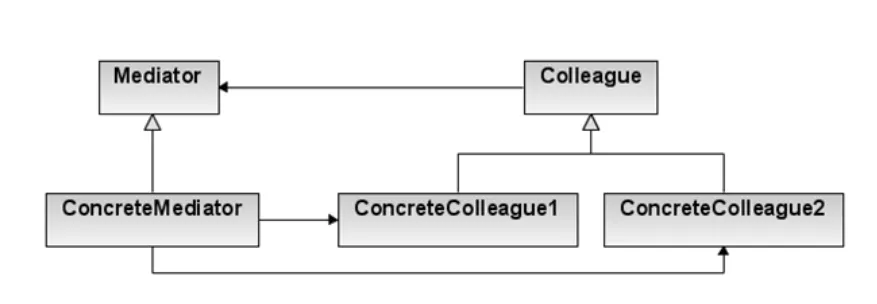
Purpose: The Mediator pattern defines an object that encapsulates the interactions between a set of objects. It promotes loose coupling by reducing direct dependencies between the objects and enables communication through a central mediator.
Implementation: The pattern involves creating a mediator interface or class defining the objects' communication protocol. Each object maintains a reference to the mediator and communicates with other objects through it.
Benefits: It reduces object coupling, making them more independent and reusable. It simplifies object communication and coordination by centralizing it in the mediator. It improves the system's maintainability.
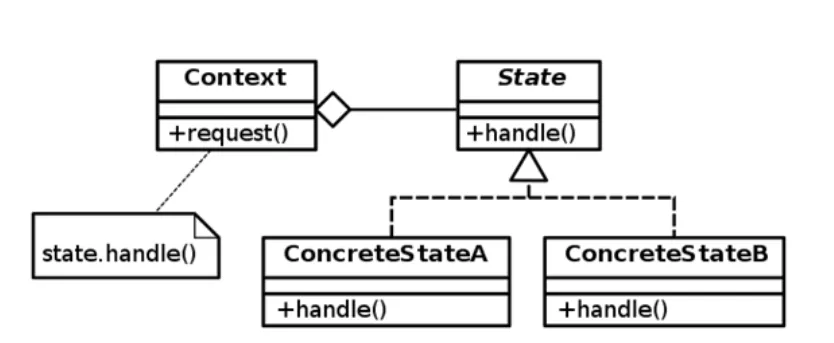
Purpose: The State pattern allows an object to change its behavior dynamically based on its internal state. It is useful when an object's behavior needs to vary based on internal conditions, resulting in different state transitions.
Implementation: The pattern involves creating state interfaces or classes representing the different states. The context object references the current state and delegates the behavior to the state object.
Benefits: It promotes cleaner and more maintainable code by encapsulating state-specific behavior into separate classes. It simplifies the addition of new states without modifying existing code. It improves code readability and reduces conditional statements.
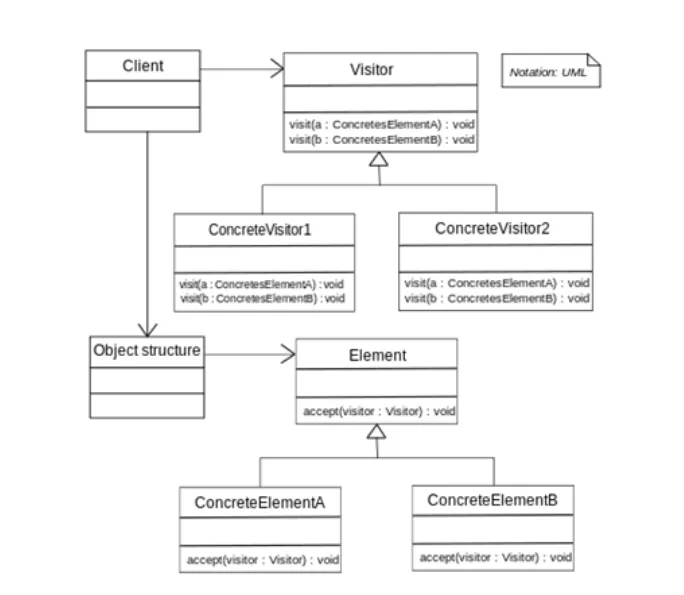
Purpose: The Visitor pattern separates the operations performed on an object structure from the classes that define the object structure. It allows adding new functions without modifying the existing classes.
Implementation: The pattern involves creating a visitor interface or abstract class that declares the visit methods for each element type. The elements accept visitors, and each element's visit method is invoked based on its type.
Benefits: It enables adding new operations to an object structure without modifying the existing classes. It promotes the open-closed principle by allowing the addition of new visitors without changing the current code. It enhances code modularity and extensibility.
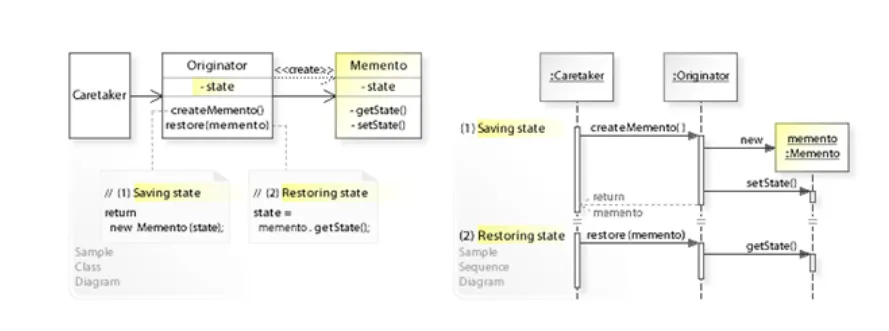
Purpose: The Memento pattern captures and externalizes an object's internal state without violating encapsulation. It allows restoring an object to a previous state, supporting undo/redo operations, or checkpointing.
Implementation: The pattern involves creating a memento object that represents the state of the originator object. The originator object can create mementos to save and restore the state from mementos.
Benefits: It allows capturing and restoring an object's state without exposing its internal structure. It provides a convenient way to undo/redo operations. It improves the maintainability as well as the flexibility of the code by decoupling state management from the object.
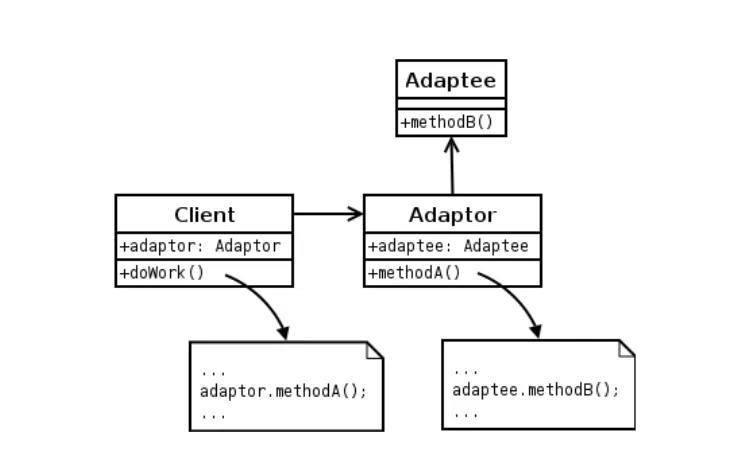
Purpose: The Adapter pattern allows objects with incompatible interfaces to work together. It acts as a bridge between two incompatible interfaces, converting the interface of one class into another interface that clients expect.
Implementation: The Adapter pattern involves creating an adapter class that later implements the interface expected by the client code and internally uses an instance of the incompatible class. The adapter class translates the requests from the client to the appropriate methods of the wrapped class.
Benefits: The Adapter pattern allows the reuse of existing classes with incompatible interfaces by providing a standard interface that clients can work with. It enables objects from different systems or libraries to work together, even with other interfaces or protocols.
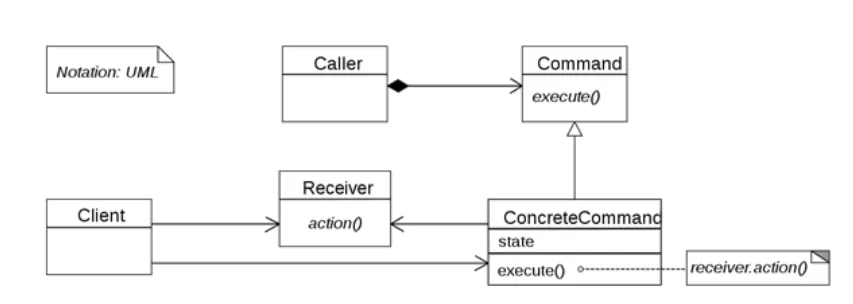
Purpose: The Command pattern encapsulates a request as an object, allowing clients to parameterize clients with different requests, queue or log requests, and support undoable operations. It promotes loose coupling between sender and receiver, providing flexibility in executing and managing requests.
Implementation: The Command pattern defines a command interface with an execute method. Concrete command classes implement this interface and encapsulate a specific action or request. The client code creates instances of these command classes and associates them with the appropriate receivers.
Benefits: The Command pattern decouples the sender of a request from the receiver, allowing them to vary independently. It will enable clients to dynamically change their requests to receivers, providing greater flexibility and configuration.
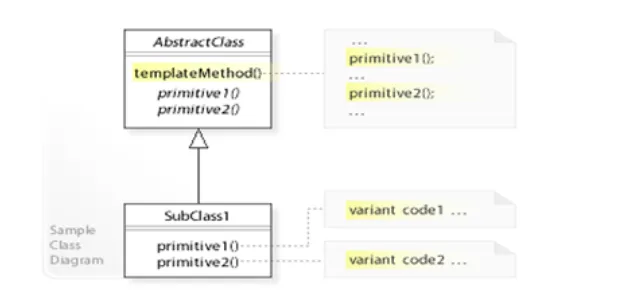
Purpose: The Template Method pattern defines the skeleton of an algorithm in a base class but allows subclasses to override specific algorithm steps. It provides a way to determine the overall structure of an algorithm while allowing subclasses to customize certain parts.
Implementation: The Template Method pattern involves creating a base class that contains the overall algorithm, with specific steps implemented and others left abstract or marked for overriding. Subclasses inherit from the base class and provide their implementations for the abstract or overrideable methods.
Benefits: The Template Method pattern promotes code reuse by encapsulating common algorithmic steps in the base class. It allows subclasses to provide custom implementations for specific actions, giving the flexibility to adapt and extend the algorithm. It also improves code organization by separating the high-level algorithm from the particular details of its implementation.
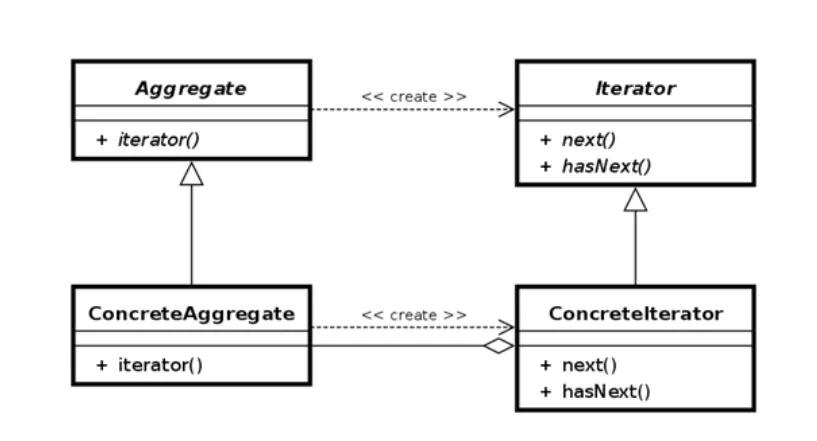
Purpose: The Iterator pattern allows access to elements of an aggregate object without its underlying representation. It separates the traversal logic from the aggregate object, allowing different traversal algorithms to be used.
Implementation: The pattern involves creating an iterator interface or class that defines methods for accessing elements in the aggregate. The aggregate object provides a way to create an iterator that encapsulates the traversal logic.
Benefits: It simplifies the client code by providing a standardized way to iterate over elements of different aggregates. It allows multiple iterations to be active simultaneously on the same aggregate. It promotes loose coupling between the client and the entirety by encapsulating the traversal logic.
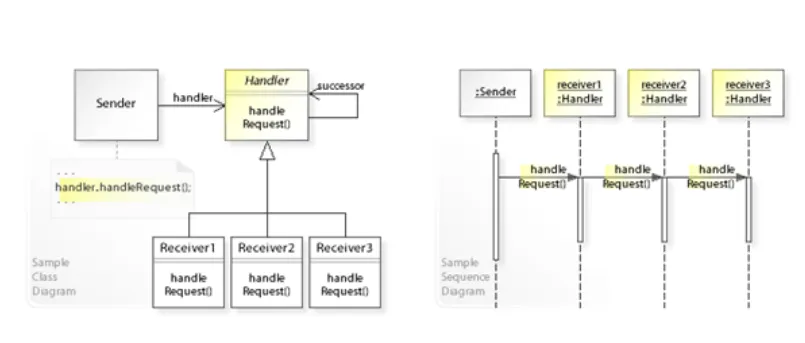
Purpose: The Chain of Responsibility pattern allows an object to pass a request along with potential handlers until one of them handles the request. It decouples the sender of a request from its receivers and provides a way to determine the receiver dynamically.
Implementation: The pattern involves creating a handler interface or class that defines a method for handling requests. Each handler has a reference for the next handler in the chain. The sender sends the request to the first handler, and each handler decides whether to handle the request or pass it to the next handler.
Benefits: It provides a flexible and extensible way to handle requests without coupling the sender to specific receivers. It allows multiple objects to have a chance to drive a request. It simplifies the sender's code by removing the need to know the exact receiver.
That's it!!! These are some of the commonly used design patterns in software development up to date. Each pattern has its purpose, implementation, and benefits, and they can significantly contribute to creating flexible, modular, and maintainable software systems. However, consult a design services provider to get better results.
Continuing Reading: The Impact of Visual Design On Overall User Experience
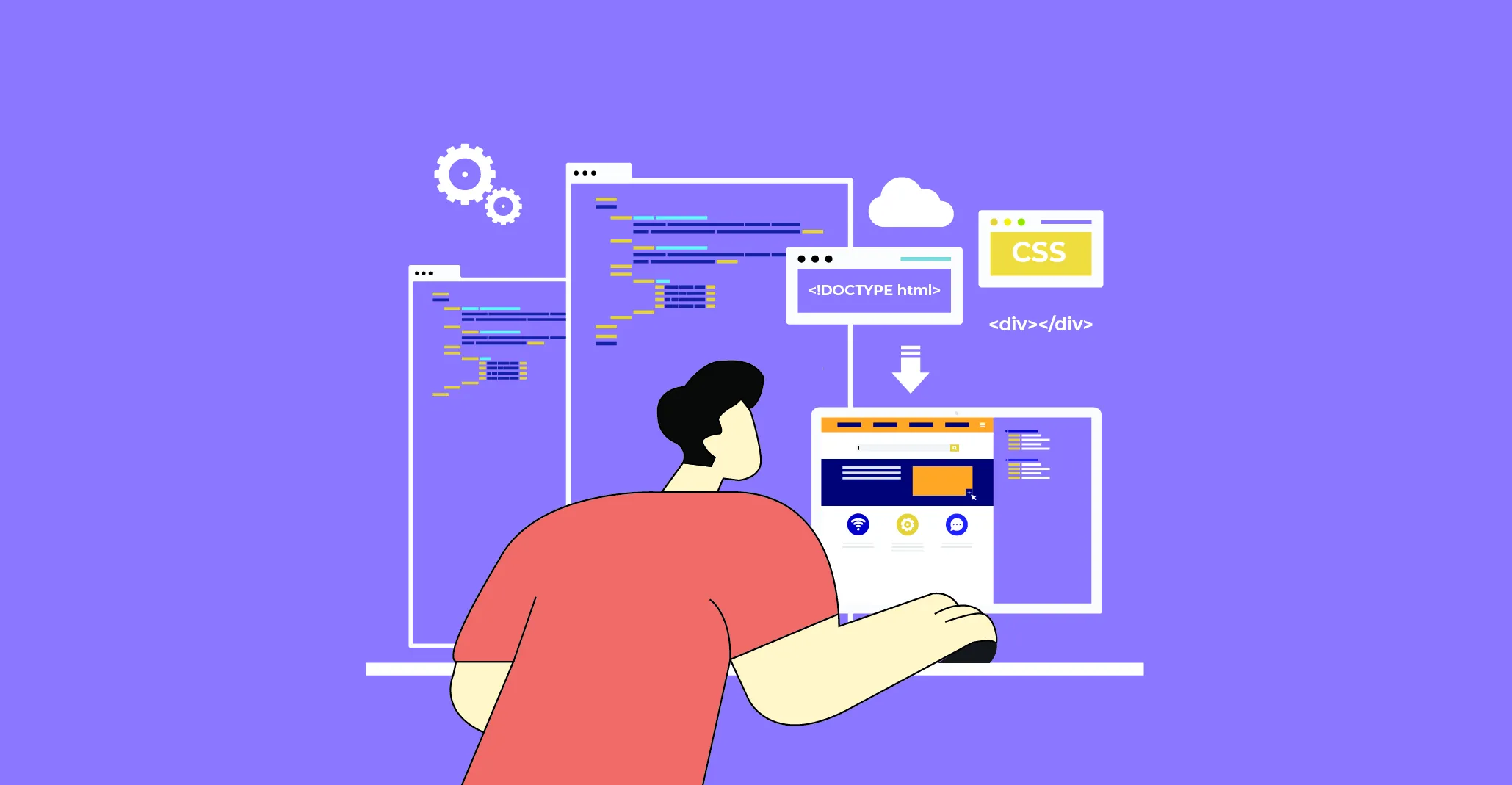 Critics argue that software design patterns are often overused and can become a crutch for programmers, leading to unnecessarily complex solutions. Instead of carefully analyzing the problem and finding the most direct solution, some developers may need to understand the purpose and implications of using design patterns entirely. It can result in bloated code that is harder to maintain and understand.
Critics argue that software design patterns are often overused and can become a crutch for programmers, leading to unnecessarily complex solutions. Instead of carefully analyzing the problem and finding the most direct solution, some developers may need to understand the purpose and implications of using design patterns entirely. It can result in bloated code that is harder to maintain and understand.
Continue Reading: Anti-patterns You Should Avoid While Coding
Another criticism is that design patterns can sometimes be used as a workaround for weaknesses or missing features in a programming language. Rather than directly addressing the language's limitations, developers may rely on design patterns to achieve the desired functionality. It can introduce unnecessary complexity and bloat into the codebase.
When selecting a tech stack for a project, it's crucial to evaluate whether the chosen programming language has the necessary features and capabilities to avoid an over-reliance on design patterns. Alternatively, opting for a framework that incorporates design patterns optimally and efficiently can be a viable approach.
By leveraging a framework's built-in patterns, developers can focus on solving the specific problem rather than reinventing the wheel or implementing patterns from scratch.
In summary, software design patterns can be valuable when used appropriately; they are only a panacea for some software development challenges.
Hence, developers need to balance applying genuinely beneficial patterns and not overcomplicating solutions unnecessarily. A thorough understanding of the problem domain and the nuances of each pattern is essential to avoid the pitfalls and limitations associated with design pattern usage.
Continue Reading: Difference Between UX and UI Design – Learner’s Guide
Design patterns are essential tools in the software developer's toolkit. They provide proven solutions to recurring design problems, offering numerous benefits such as code reusability, maintainability, and flexibility. Design patterns should be selected based on each software project's requirements and constraints, ensuring they align with the project's goals and architecture.
Remember, mastering design patterns requires practice and experience. As you gain proficiency, you will become adept at identifying the appropriate design patterns to solve various design problems, leading to more efficient and elegant software solutions.
Thanks!!!
Continue Reading: UX Design Difference between Android and IOS Apps
Generative AI Tech Stacks: Choosing the Right Tools for Scalable AI Development
By Dhruv Joshi
5 min read
Choosing Best Tech Stack for Web App Development: Performance, Cost, and Scalability
By Dhruv Joshi
5 min read
Top 9 Tech Stacks for Scalable Web Application Development
By Dhruv Joshi
5 min read
Generative AI Implementation Strategy: From Concept to Deployment (Step-by-Step Guide)
By Sannidhya Sharma
5 min read
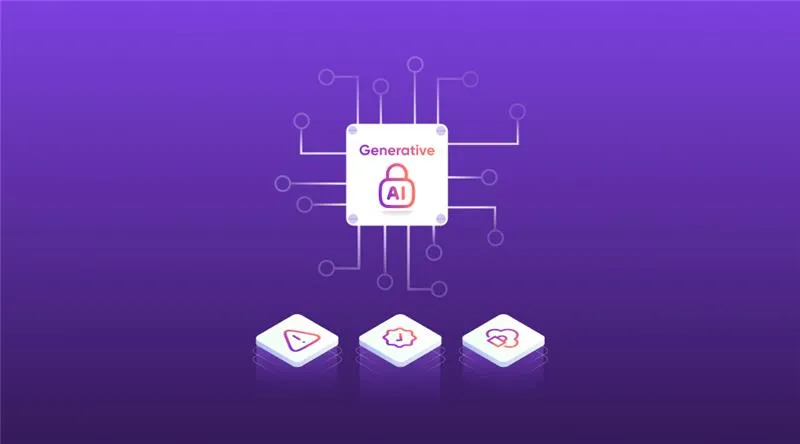
Technology

7 min
Generative AI is moving fast into enterprises, from banks to hospitals to government agencies. Adoption is rapid, but security planning lags. Unlike traditional systems, these models can be exploited through prompt injection, poisoned data, or manipulated to leak sensitive information. They are also misused for phishing, deepfakes, and malicious code.


Technology

7 min
AI-powered Web Application Firewalls (WAFs) go beyond static rules by using machine learning, anomaly detection, and predictive analysis to block zero-day threats, reduce false positives, and protect APIs at scale. Unlike traditional WAFs, they self-learn, adapt in real time, and cut operational costs while improving compliance and trust.


Technology

5 min
AI is redefining mobile app security by transforming how threats are detected, tested, and prevented. From continuous monitoring and fraud detection to compliance with regulations, AI ensures apps remain resilient against modern risks. This means safer apps, protected users, and stronger businesses. Investing in AI-driven security today builds trust, drives growth, and secures long-term competitive advantage.


Feeling lost!! Book a slot and get answers to all your industry-relevant doubts